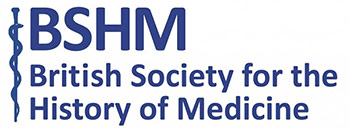The mention of ‘snake oil charms’ in the King’s speech at the opening of Parliament in July reminded me of one of the most unusual cases I encountered in my final years as a consultant surgeon, writes Bryan Rhodes.
A middle-aged man had gone for a stroll close to Fell Foot Park in the Lake District and sat down on a flattened patch of long grass. Suddenly, an adder appeared between his legs, and as he lifted his arm in self-defence, it bit him on the right hand. Despite the administration of two different types of anti-venom in A&E, by the following day swelling and discolouration was spreading up his arm, and I was beginning to consider whether an amputation could become necessary.
The adder is Britain’s only venomous snake, so mortality from snake bites is quite rare in the UK, roughly one a decade. Worldwide however, snakebite envenoming kills about 100,000 people a year, so it is perhaps surprising that the snake has become such a widespread symbol of health and healing. Certainly, our patient survived, and fortunately, no surgical intervention was required.
Indeed, the coat of arms of the British Orthopaedic Association features the Greek demi-god of healing Asclepius, pictured as usual with a large snake winding its way up his staff, the snake’s head perilously close to the demi-god’s abdomen. There are many theories about the ‘Rod of Asclepius’ and associated snake including one that the snake’s ability to shed its old skin and generate a new healthy skin explains its presence. Another theory links it to the Old Testament story in which God tells Moses to ‘make a bronze snake, put it on a pole, and place it where people can see it; anyone who is bitten by a snake can look at it and live’.

Greek demi-god of healing Asclepius Photo by Michael F. Mehnert, Museum of Epidaurus Theatre, via Wikimedia Commons
Folklore
In English folklore, adders were thought to be deaf, and oil derived from adders was considered a valuable treatment for deafness and earache. To obtain the oil an adder was caught and killed, its skin was lacerated multiple times, and it was hung in a warm location with a container placed below it to catch the viscous liquid dripping from its carcass. The Oxford Dictionary of English Folklore indicates that provincial chemists would purchase this snake oil from snake-catchers, presumably for onward sale to their customers.
The adder’s shed skin was also thought to have healing power: able to help extract thorns and splinters from a person’s hand. Traditional cures for an adder bite included oil from the offending snake, wrapping the victim in a fresh sheepskin, or applying a flat ‘snakestone’ to the site. Of all the strange historical treatments provided for adder bites in the centuries before anti-venoms, perhaps the most bizarre was that discovered in Wiltshire by the notable antiquary and natural historian, John Aubrey FRS (1626 – 1697) which involved fastening a succession of live pigeons to the site of the snake bite.
Norman Morrison, a retired Scottish police officer who developed a fascination for adders and published ‘The Life Cycle of the Adder’ in 1924 was himself bitten on the right hand by an adder and wrote about the experience and some of the traditional Hebridean ‘cures’ in his later publication ‘My Story’.
Snake oil salesman
The term ‘snake oil salesman’ now means the archetypal charlatan: the fast-talking seller of quack or fake cure-all remedies. The term has also spread more widely such that it is often applied to politicians, businessmen and anyone offering false hope or dubious treatments. The poor reputation of snake oil salesmen appears to be largely attributable to a Texan called Clark Stanley (b. 1854). In the late 1880s, Chinese itinerant railway workers commonly used a Chinese liniment derived from water snake oil.
Stanley produced an American alternative which he claimed to contain rattlesnake oil, which was sold widely across the US. The Pure Food and Drug Act of 1906 brought in a new era of scrutiny for all American products claiming medicinal properties, and Stanley’s Snake oil liniment was analysed in 1916. The product was found to be almost entirely mineral oil and didn’t contain any snake oil at all. Stanley was found guilty of ‘misbranding’ his product and fined $20.
Since the release of Captopril in 1980, an ACE inhibitor and anti-hypertensive drug developed following research by John Vane and Sergio Ferreira on a component of Brazilian pit viper venom, there has been increasing interest in the therapeutic possibilities of snake venom. There seems to be much less enthusiasm for the charms of snake oil!
Bryan Rhodes is a retired consultant orthopaedic surgeon. He is the book review editor of BSHM and the chair of the Lancaster Health and Medical Museum Collection.
References and further reading:
- A Dictionary of English Folklore, Editors: Jaqueline Simpson and Steve Roud, 2003, OUP
- Oliveira, A.L. al. The chemistry of snake venom and its medicinal potential, Nature Reviews Chemistry, 6, 2022, pp451-469
- Morrison, N., My Story, 1937 Published in Inverness





